Student information card of Rosa Little, a member of the Apache Nation, who entered the school on October 15, 1910 and departed on June 4, 1914.


Student information card of Rosa Little, a member of the Apache Nation, who entered the school on October 15, 1910 and departed on June 4, 1914.
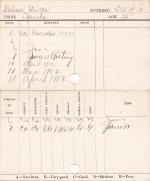
Progress card of Victor Dolan, a member of the Apache Nation, who entered the school on October 15, 1910.
Note: Although this card shows an arrival date of October 17, the admissions ledger and his file suggest that he actually arrived on October 15.

Student file of Victor Dolan, a member of the Apache Nation, who entered the school on October 15, 1910 and departed on April 29, 1915. The file contains a student information card, an application for enrollment, medical/physical records, trade/position record cards, a progress/conduct card, an outing record, a returned student survey, a…

Student information card of Victor Dolan (here Doland), a member of the Apache Nation, who entered the school on October 15, 1910 and departed on April 29, 1915.

Progress card of Robert Geronimo, a member of the Apache Nation, who entered the school on September 14, 1911.
Note: Although this card shows an arrival date of September 15, the admissions ledger and his file suggest that he actually arrived on September 14.
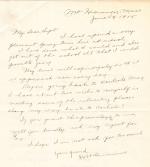
Student file of Robert Geronimo, a member of the Apache Nation, who entered the school on September 14, 1911 and departed on June 7, 1916. The file contains student information cards, an application for enrollment, financial transactions, correspondence, progress/conduct cards from Mount Hermon School, a federal financial aid form, and an…

Student information card of Robert Geronimo, a member of the Apache Nation, who entered the school on September 14, 1911 and departed on June 7, 1916.

Progress card of John Too-is-gah, a member of the Apache Nation, who entered the school on September 20, 1911.
Note: Although this card shows an arrival date of September 21, the admissions ledger and his file suggest that he actually arrived on September 20.
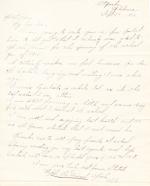
Student file of John Too-is-gah, a member of the Apache Nation, who entered the school on September 20, 1911 and departed on June 13, 1914. The file contains a trade/position record card, student information cards, an application for enrollment, medical/physical records, an outing evaluation, an outing record, and correspondence.
…

Student information card of John Too-is-gah (here Tooisgah), a member of the Apache Nation, who entered the school on September 20, 1911 and departed on June 13, 1914.
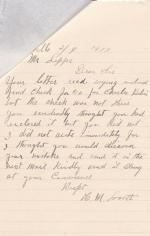
Student file of Charles Belin, a member of the Apache Nation, who entered the school on September 3, 1915 and departed on June 13, 1917. The file includes student information cards, applications for enrollment, a physical record, an outing evaluation, financial transactions, correspondence, and an outing record. The files indicate that after…

Student information card of Charles Belin, a member of the Apache Nation, who entered the school on September 3, 1915 and departed on June 13, 1917.
Note: Students Charles Belin and David Belin were brothers.
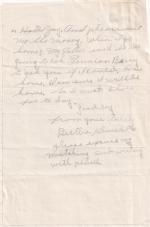
Student file of Bertha Klinekoli, a member of the Apache Nation, who entered the school on September 4, 1916 and departed June 7, 1918. The file contains student information cards, an application for enrollment, financial transactions, medical/physical records, certificates of promotion, a vacation request form, and correspondence. The file…

Student information card of Bertha Klinekoli, a member of the Apache Nation, who entered the school on September 4, 1916 and departed on June 7, 1918.
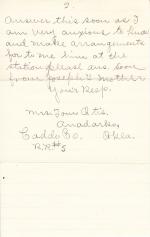
Student file of Joseph Yeahpau, a member of the Apache Nation, who entered the school on September 4, 1916 and departed on July 10, 1917. The file contains a student information card, an application for enrollment, a medical/physical record, and correspondence. The file indicates that Yeahpau was living in Anadarko, Oklahoma in 1917.
In…

Student information card of Joseph Yeahpau, a member of the Apache Nation, who entered the school on September 4, 1916 and departed on July 10, 1917.
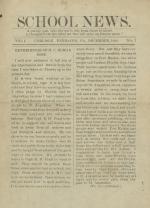
Issue Seven opens with Roman Nose explaining how he came to Carlisle after being held captive in St. Augustine for three years. He explains his time there was good because of the kindness of Capt. Pratt. After the editorial about the benefits of speaking English, there was a small letter from a Sioux boy named Phillip, to show how “large boys…
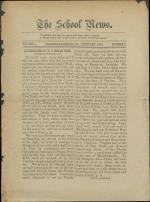
Issue nine, continues Roman Nose’s story, showing him attending Hampton School and eventually traveling to Lee, Ma. This issue’s editorial featured a piece on the hopes that the new U.S. President Garfield will put all Indian children in school. On the same page Robert W. Stewart (Creek) wrote about George Washington’s birthday. A bit about…
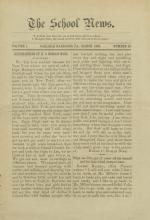
It opens with the conclusion to Roman Nose’s long journey to Carlisle. He explained how at Lee he learned to mow with a scythe and milk cows, before travelling to Carlisle Barracks, where he was happy to see other Indians following the “white man’s way”. Also on the first page is a small bit from Sophie Rachel (Nez Perces) on how she learned to…
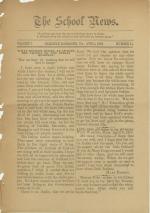
The opening article was written by Michael Burns (Apache), and focused on “The Indian Question.” In it he explains how many Indians falsely believe that white men are wiser simply because they are born white, and argues that their wisdom comes not from their skin color, but from more easily accessed education. The second page gives some…
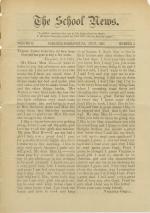
The entire first page is a letter from Virginia Oequa (Kiowa) to her teacher Miss H, sent after she left Carlisle to work on a farm for a few weeks. She sent her love and explained the pride she took in her work. Page two had two articles on the shooting of President James Garfield, written by Samuel Townsend (Pawnee) and Robert W. Stewart (…
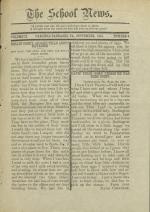
The first page is has a small narrative from Nellie Carey (Apache) on her visit to the Navajoes with her white family, She describes the Navajoes as dirty, explaining how they don’t keep their tents clean. There was also a letter from Davis Cheyenne (Cheyenne) to Captain Pratt about his time in Old Bucks. Charles Kihega (Iowa) and Ellis B.…
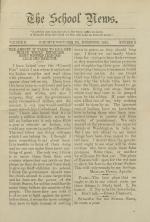
The first page talked about the cost of educating an Indian vs the cost of killing one to support the Indian Schools. The article was titled “The Amount it Takes to Kill One Indian Would Establish Many School Like Carlisle and Hampton” by Michael Burns (Apache). The second page has an article encouraging students to only speak English to learn…
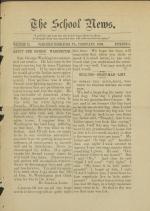
The first page had two articles on it. The first was by Johnson Lane about George Washington. The second was about various lost people and animals that the writer had met. Page two opens with Charles Kihega (Iowa) describing his tribe before and after coming under control of the agency. Another article talked about the Northern Arapahoe chief…
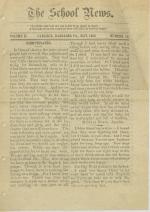
The first article is Titled “Communicated” by Michael Burns (Apache). It discusses the opportunities Indians have to access education. On the same page Libbie Standing (Cheyenne) wrote about Indians fighting and Joe Big Wolf wrote his father challenging him to speak English better than his son. On Page two Ralph Eagle Feather (Sioux) talked…